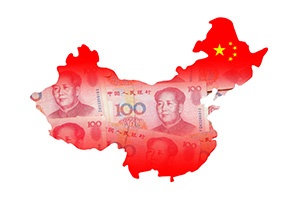 We closed yesterday’s post with the conclusion that the confrontation to watch is between China and the U.S. and that, at least for the next decade, the conflict is likely to be economic and not military. This is often characterized as a trade conflict. Indeed, that is how it is playing out in the headlines. In fact, however, trade is a symptom and not a cause.
We closed yesterday’s post with the conclusion that the confrontation to watch is between China and the U.S. and that, at least for the next decade, the conflict is likely to be economic and not military. This is often characterized as a trade conflict. Indeed, that is how it is playing out in the headlines. In fact, however, trade is a symptom and not a cause.
National imperatives
To get to the root causes of the conflict, we first need to look at national imperatives.
For the U.S., the national imperative is to maintain its position as the dominant power—economic, military, and cultural. No dominant power has ever willingly surrendered that position. Our core interest is the status quo, albeit with improvements. Anything that changes the status quo will provoke a substantial response. That imperative is what is driving U.S. policy right now.
China’s national imperative is a bit different. Yes, China wants to be the dominant power, but that is not what is driving its immediate plans. What China needs most urgently is economic, not political—the ability to make the jump from a middle-income country to a developed economy.
What does this mean for China?
First of all, China has to develop a solid consumer base that can grow the economy through internal demand, rather than through exports. Second, China has to keep moving up the value chain to more skilled jobs, more valuable exports, and a more service-based economy to help meet the first goal. Third, China has to do all of this while maintaining political stability and party control. Let’s look at each of these.
Consumer base. First, China does have a large middle-class in absolute terms. But as a proportion of the population, it is still below that of the West, and there are large areas in relative poverty. China does not yet have the internal consumer spending power to drive economic growth. It is getting there, but it is not there yet. China is still dependent on external demand and will be for at least the next several years.
Value chain. Second, to move up the value chain, China has to keep improving its skills and intellectual property—and that gets harder the further you advance. Theft of western technology has been an increasingly high-profile issue recently because the Chinese are no longer using old stuff but cutting-edge stuff. That is a direct threat to western companies and economies. China is no longer a cheap option but a direct competitor. This raises the stakes considerably.
Political stability. Third, for all of China’s economic success, there are signs that it recognizes the political part of the transition may be the most difficult. The switch from a consensus-driven leadership model to a more centralized one is likely driven by the coming challenge. Rising internal dissent in areas away from the developed coasts seems to suggest not all parts of the country have benefited equally—and some may be starting to demand more of the pie. This doesn’t mean the problems are not solvable. But it does suggest that China’s internal concerns are not simply economic. Economic headwinds will make them more difficult.
A difficult transition
This is a tough mix. There are very few countries that have been able to make the transition from middle income to rich economies. Japan and South Korea are at the head of the list, but they got there by focusing strictly on economic growth and outsourcing their foreign and security policy to the U.S. in exchange for open access to the U.S. market. Farther back, post-WWII Europe essentially made the same deal under the Marshall Plan, with the same results. In every case, open access to the U.S. market (and deference to U.S.-led world order) has been a prerequisite for continued growth and a transition to developed market status.
That recipe worked for China as well, until recently. In fact, since 1980, it has been Chinese policy to grow within the system, rather than to disrupt it. It worked, making China the world’s second-largest economy. That growth, however, was built on global market access, especially to the U.S. It is an open question whether China can maintain that growth without such access.
The U.S. response
This context explains much of what is happening right now and gives us some ideas about what to look for over the next several years. With China’s decision to prioritize politics over economics, the U.S. now has to respond. We will analyze that response next.


 Print
Print

